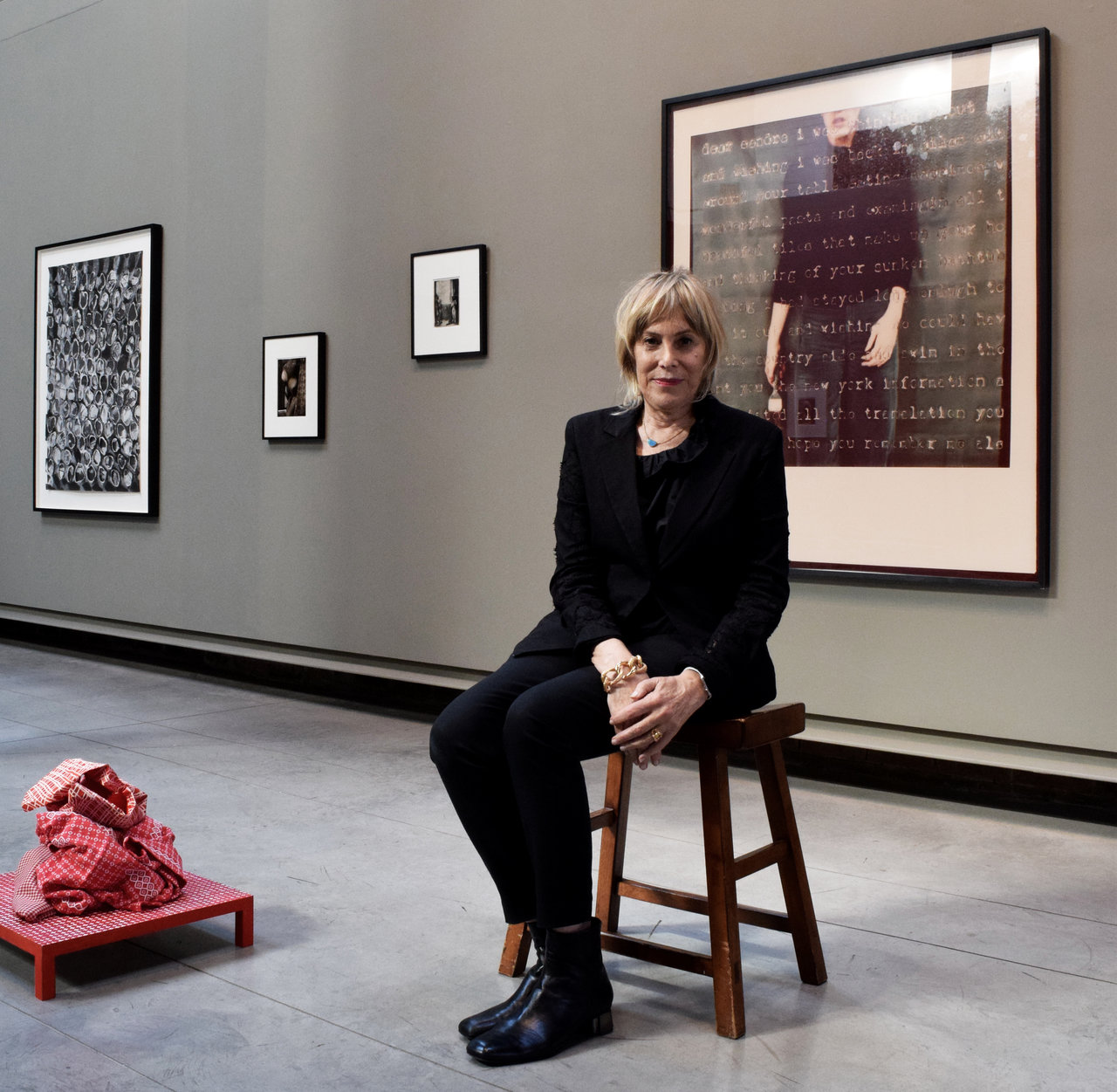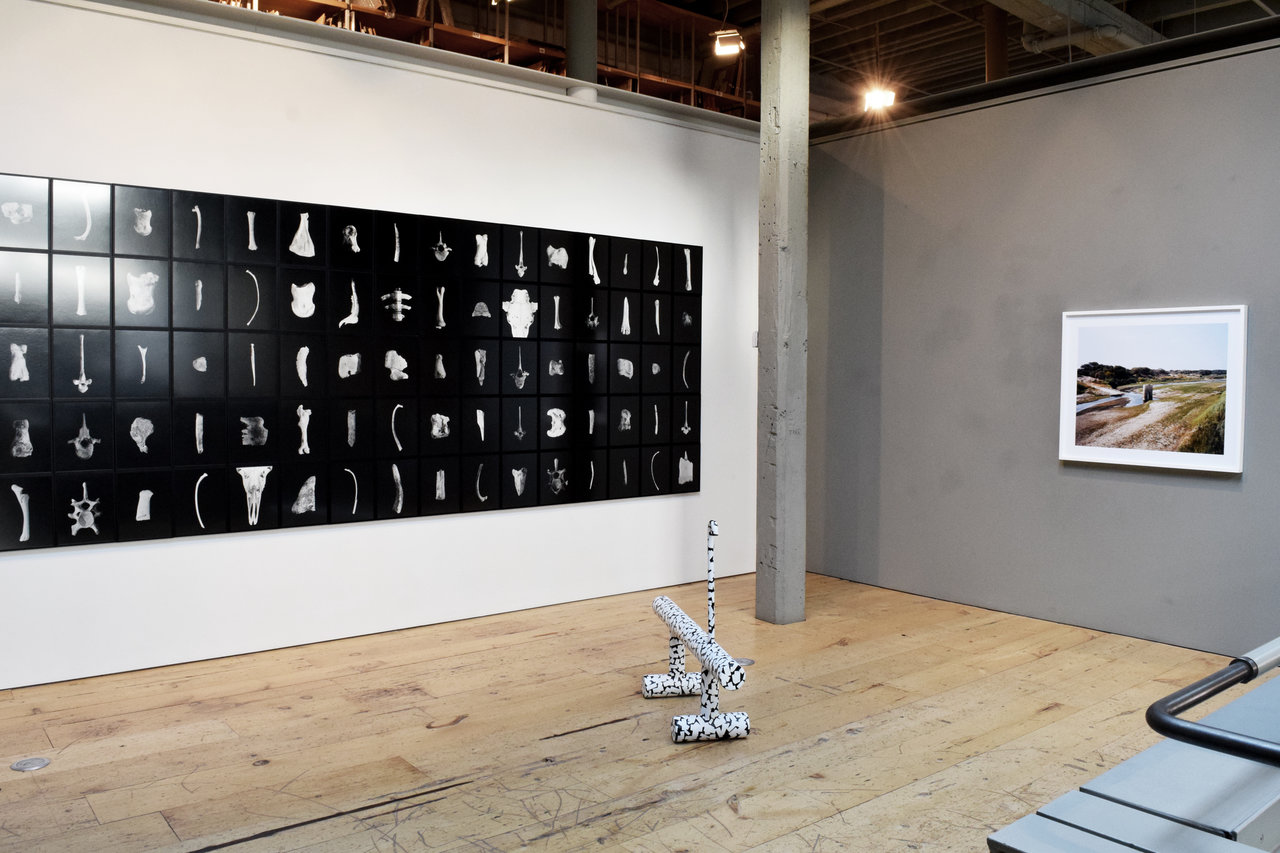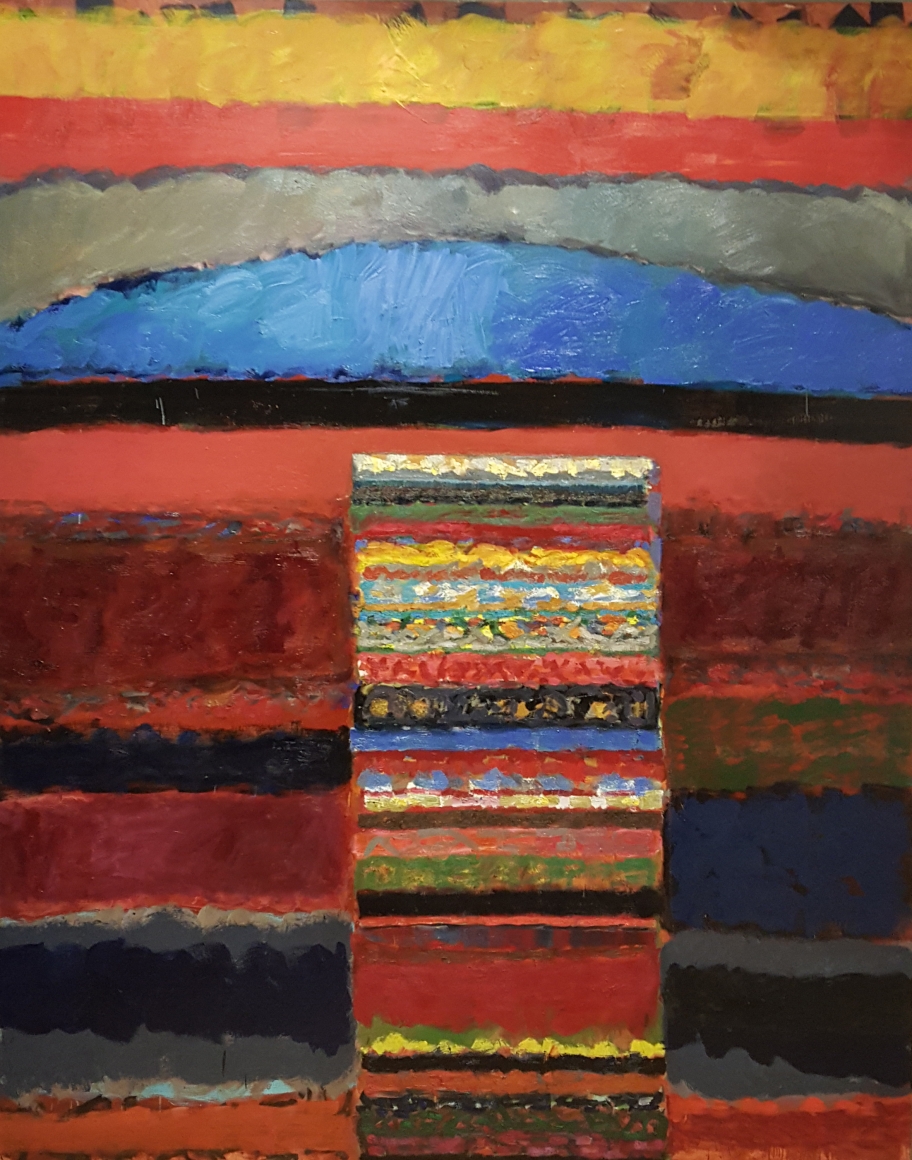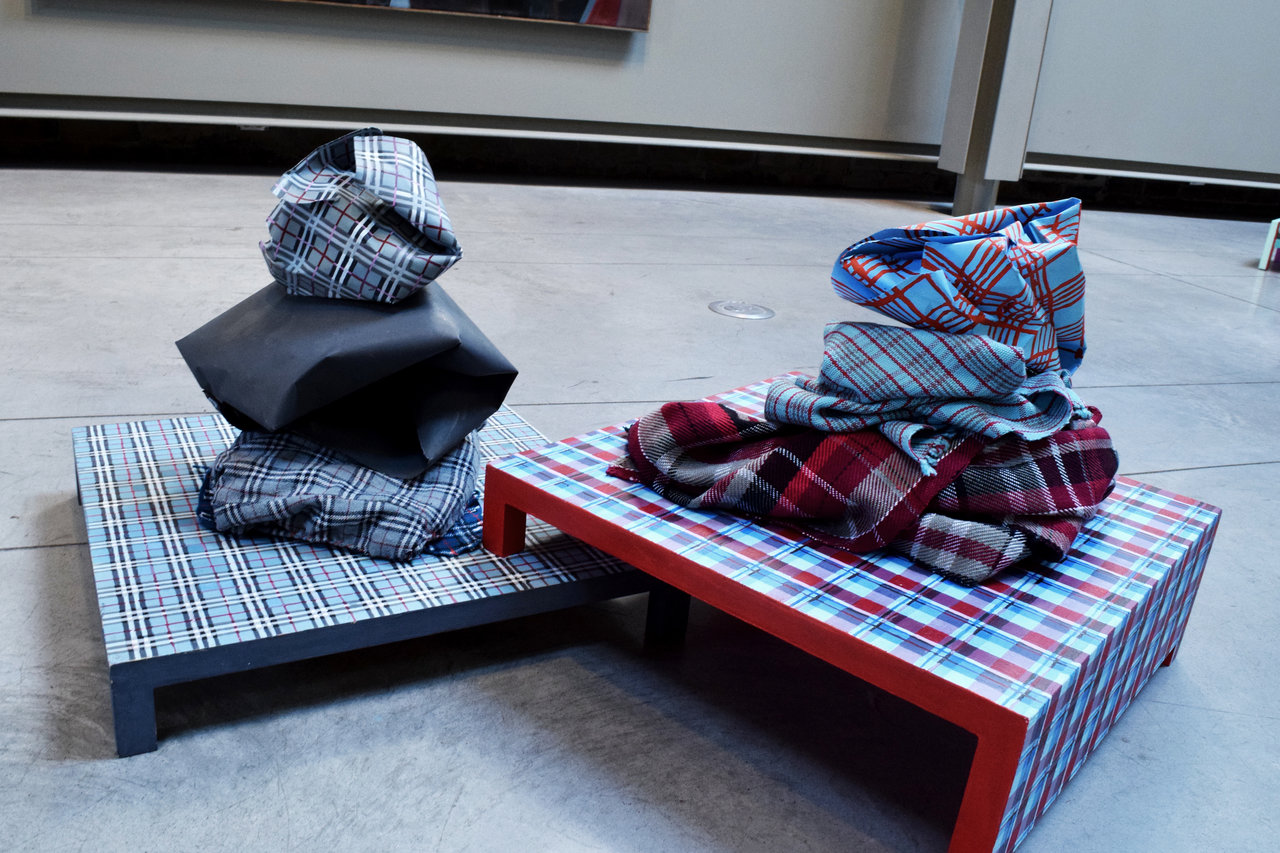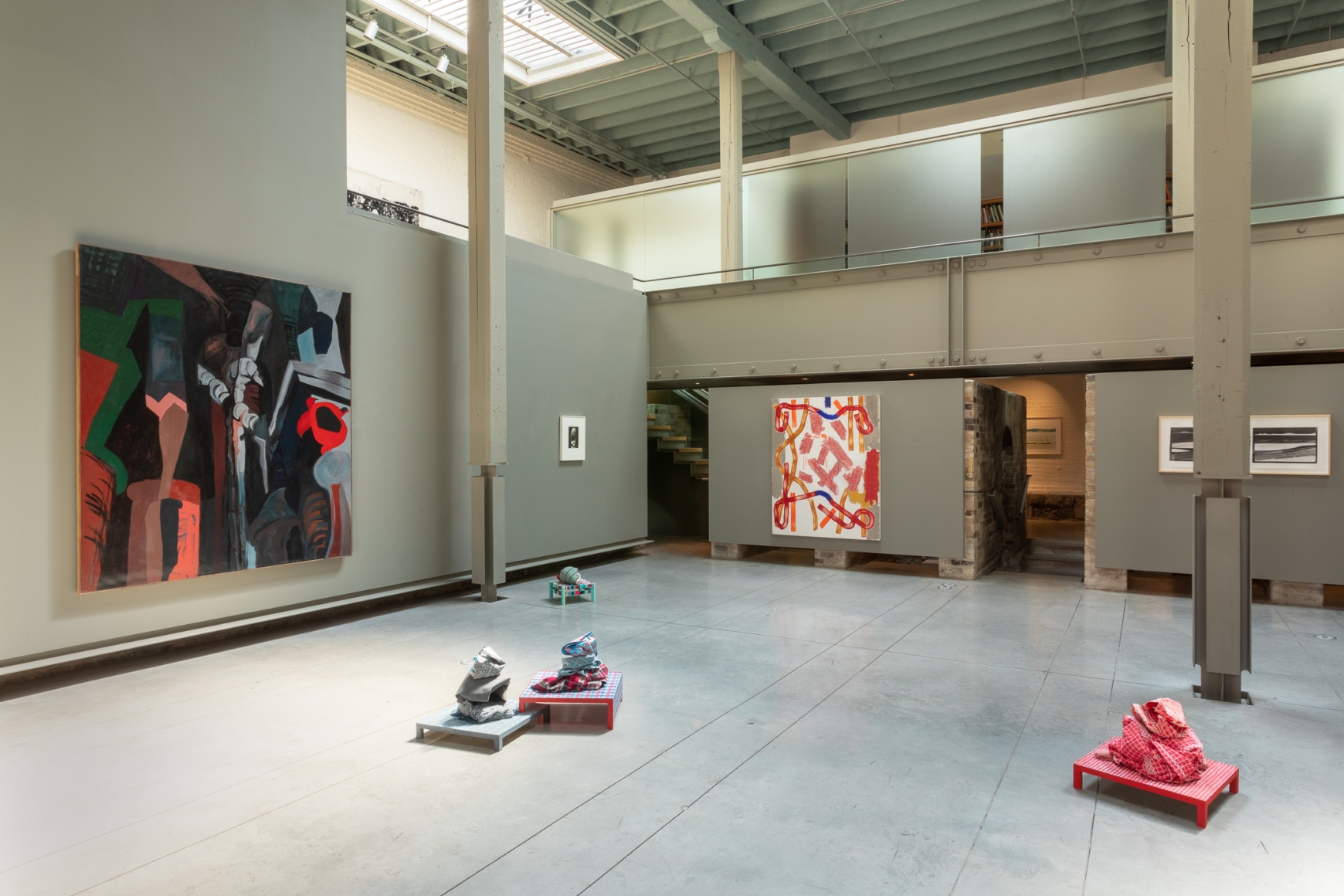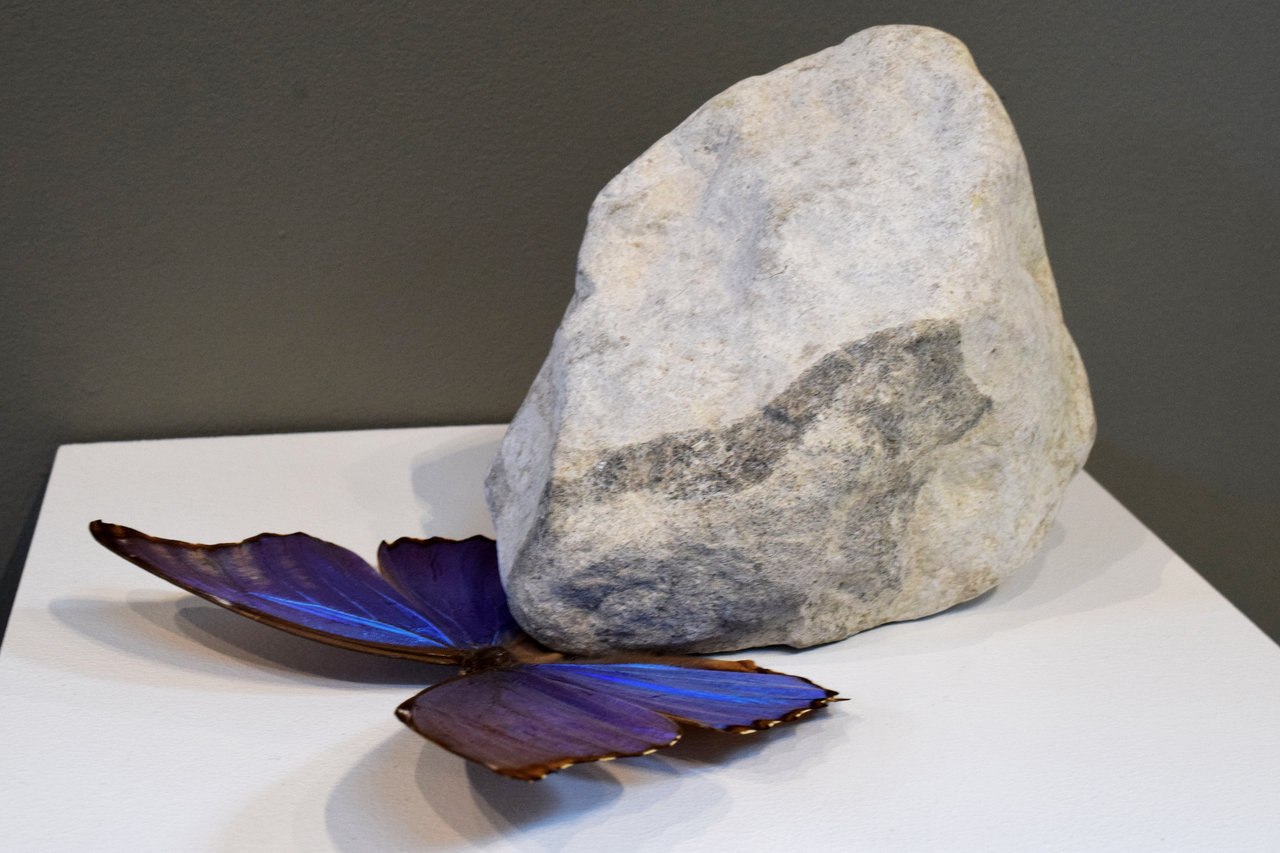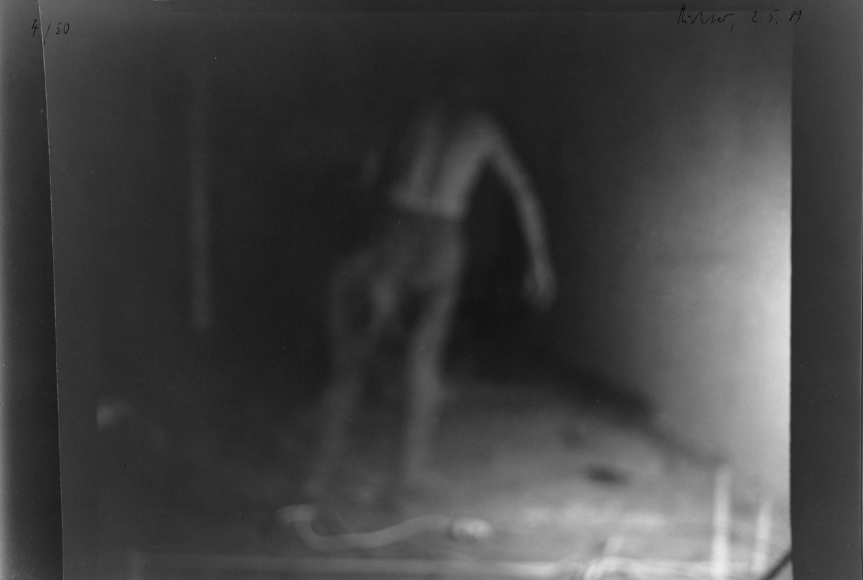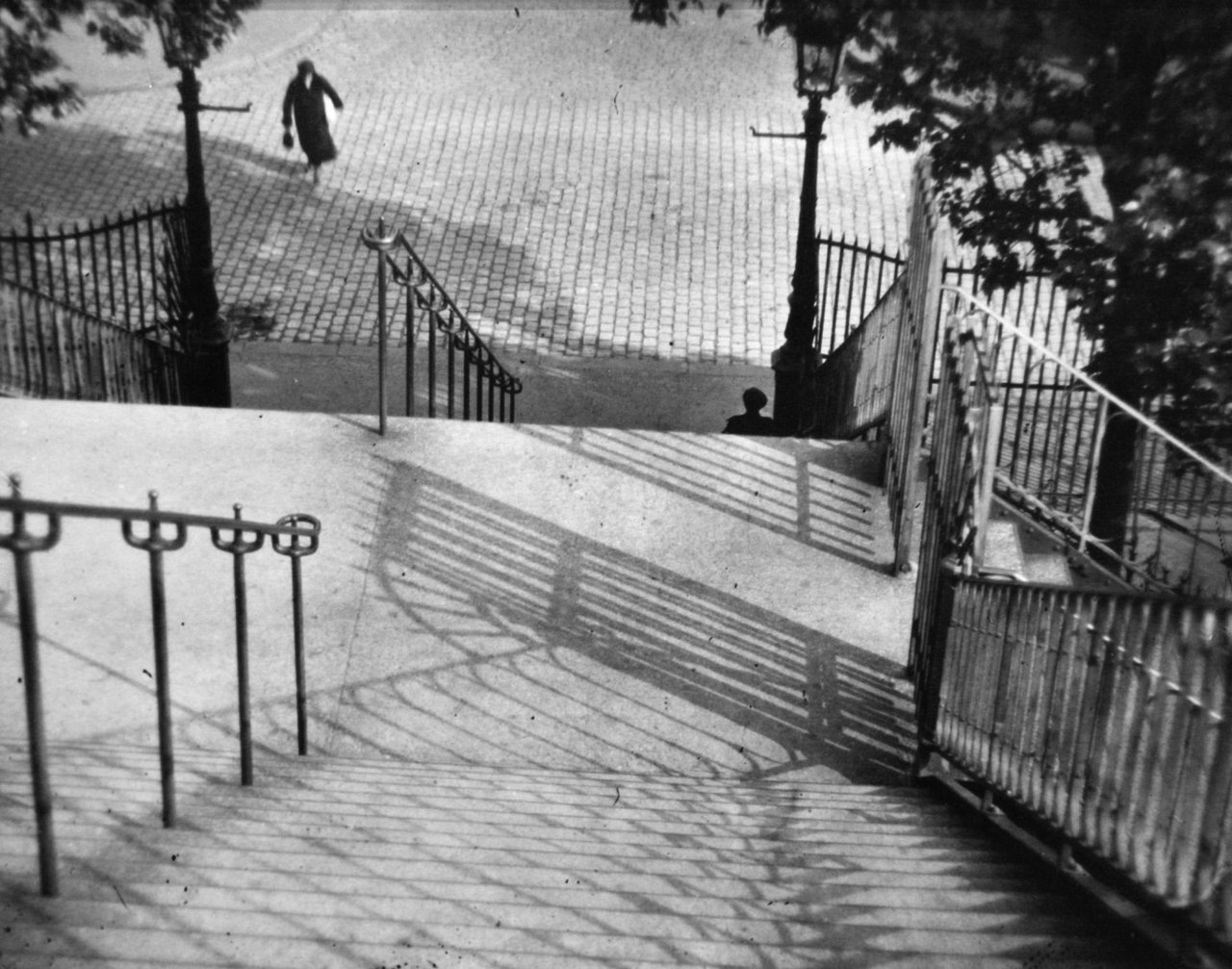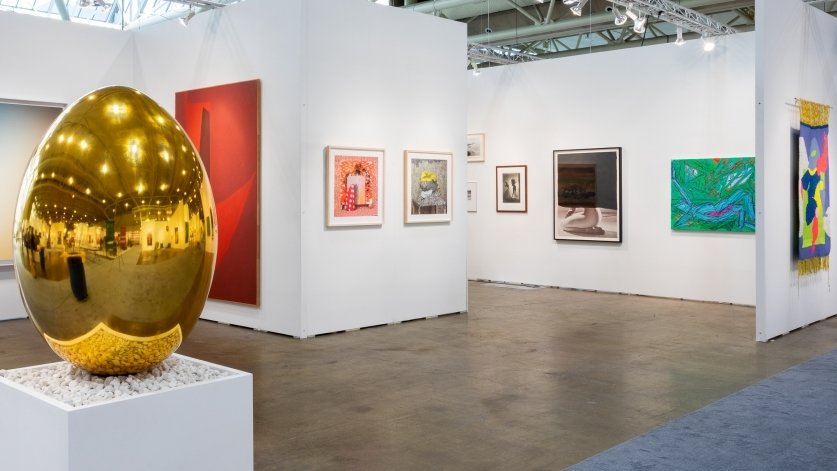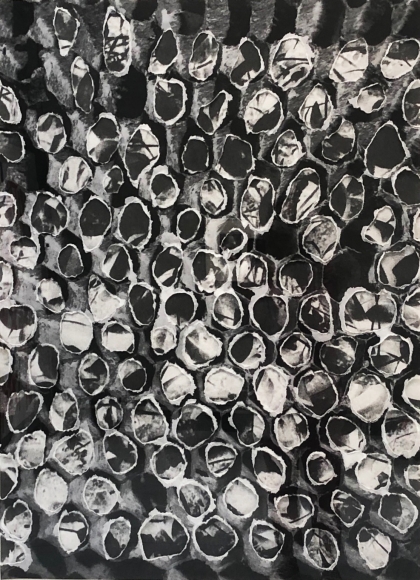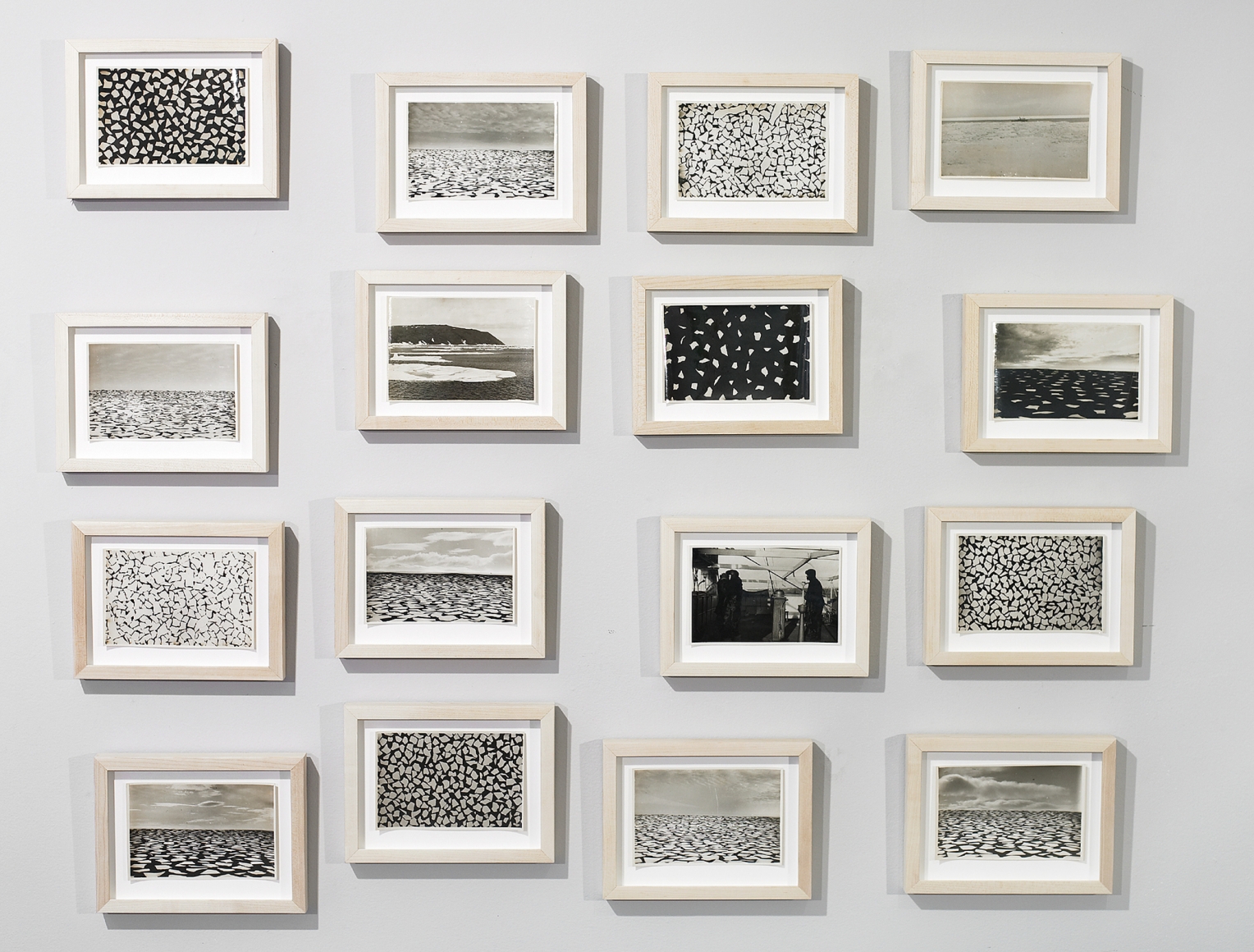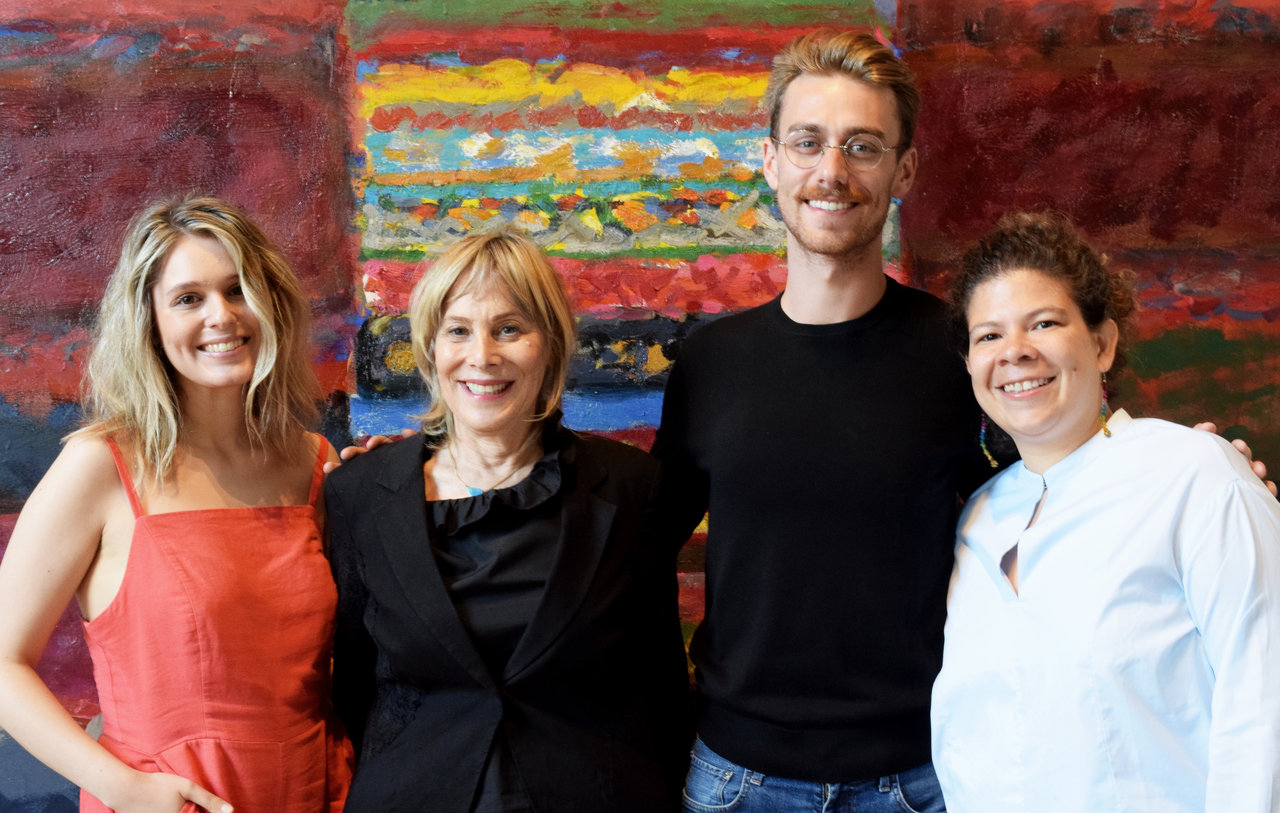Jane Corkin, owner of Corkin Gallery in the 40th Anniversary Exhibition,
When the sun departs for a new horizon, October, 2019. Photo: Simon Termine
Interview with Jane Corkin (JC) on the occasion of celebrating the 40th Anniversary of Corkin Gallery by Simon Termine (ST)
ST: First and foremost, thank you for agreeing to sit down with me and discuss the Corkin Gallery anniversary. The exhibition When the sun departs for a new horizon is absolutely amazing with such a rich variety of work, especially from vintage photography and contemporary artists. The Corkin Gallery has been such a huge part of artists’ careers… and here, there is so much talent.
JC: Thank you, too. This is exciting to have an exhibition of emerging artists, mid-career artists, and senior artists speaking to historical precedents. Yes, the rich variety emanates from having so many years of thinking about art, seeing an enormous amount of art around the world and collecting art.
Installation view with works by Thaddeus Holownia (left), Andrés Marroquin Winkelmann (right) and Miles Gertler (centre). Photo: Simon Termine
It is impossible to separate the historical from the contemporary because they are in a continuous dialogue. I have had the privilege and the advantage of seeing so much to be able to establish connections.
We started working with young artists 40 years ago and helped them to establish their careers. They are no longer emerging artists. They now have a prominent place in Canadian history. This is the challenge with each emerging artist we bring into the gallery. We are excited about our current emerging program.
Gina Rorai, Montara, 2015, oil on canvas, 10 x 8 ft. Courtesy of Corkin Gallery
ST: From everything you just described, was that part of your initial vision when you started all those years ago?
JC: It has certainly been a journey since I started. Somehow I was a kind of “renegade” 40 years ago doing something different in Toronto, showing photographs, ceramics and even furniture. At that time, there were not many collections in town; my vision was to have people interested in what the artists were making, then finally to build collections with purpose. The artworks became part of their home, workspaces, in a private sphere.
Michelle Forsyth, Grey Stack, 2015, 18 x 18 x 14 in. (left) and Blue and Red Stack, 2018, 18 x 18 x 15 in. (right) both sculpture, mixed media. Photo: Simon Termine
My vision has been transformed by time. In 2000, I imagined a space that allows artists to play and experiment with it. Our beautiful gallery in the Distillery District allows us to exhibit large-scale paintings, installations and more, which is enormously stimulating. I feel like I have gone back to my roots. We are engaged with artists because they are thinking and making work related to issues that are important at a specific time. Eventually the artwork becomes timeless. This is what art is. Or at least, how I think about it.
Various Artists When the sun departs for a new horizon, 2019. Installation at Corkin Gallery. Courtesy of Corkin Gallery
ST: You work to cultivate relationships between the artists themselves and prospective buyers. Are there any challenges that come with that?
JC: We try to create collections. We don’t want to just sell art. We want to inspire people to think about the artists’ practices. We are focused on supporting our community by engaging viewers with themes that resonate today such as identity, the preservation of our environment or the importance of revisiting history.
There are always challenges to attract audiences or find collectors who are interested in a larger or complex exchange. We are thinking about the artists who live and work here in Toronto within a context of international artists. The exhibition we have up now – When the sun departs for a new horizon – has about 30 works from artists all over the world. What is important is that we put together a conversation between artists from different places like Peru, Germany, Russia and Canada, producing work at different moments but with similar questions.
Jota Castro, Here Comes the Rain Again, 2013, stone and butterfly, Dimensions variable. Photo: Simon Termine
The final goal is to build something more than just decorative artwork. An art piece that reaches your soul is something that you respond to, ultimately enhancing life experience.
ST: In your gallery, you have covered a myriad of social issues: for example, the Peruvian works that cover the country’s economic failure and the German photographs that deal with degenerates during World War II. Was there any difficulty in portraying those works?
JC: All art comes out of a social time and place. Artists reflect upon their context. I think you are speaking about the Gerhard Richter. While he is focusing on bringing our attention to a historical moment, the work itself is not aggressive. It is intriguing. In this case, the artist wants to be sure we remember history. Maybe the art responds to difficult themes but the subcontext of the work is beautiful. I don’t have any problem showing work engaging with social issues and engaging the viewer with the issues.
Gerhard Richter, 4.5.89, from the series: 2.5 – 7.5.89 Sechs Fotos, 1989
gelatin silver print, 13 3/4 x 20 in. Courtesy of Corkin Gallery
In the end, the great pleasure is to be involved with inspirational artists and to bring different visions to the city. In the early days, I developed exhibitions with photographers like André Kertész, Harry Callahan, Irving Penn, Richard Avedon, Arnold Newman, Nan Goldin, Giselle Freund, and Diane Arbus. When I was beginning my career, photographers were mainly ignored by the mainstream and they required spokespeople. Even Nan Goldin or Diane Arbus was part of the outsider movement. There were not many people who understand the art I was showing. Photography was considered a new media but not art and I was lucky to be part of the movement that defined how we see photography today. My personal collection is rich with great historical photographs.
André Kertész, Stairs of Montmartre, Paris, 1925, print made 1975, gelatin silver print, 11 x 14 in. Courtesy of Corkin Gallery
ST: Especially with the track record that the gallery has in supporting the photography that it has, participating in art fairs in New York, Hong Kong, Basel, Miami, Paris, LA, just as a few examples. Can you talk about your participation in international Art Fairs?
JC: We’ve done art fairs all over the world. There were years when we did ten or twelve a year!
Corkin Gallery’s booth at Art Toronto, 2019. Courtesy of Corkin Gallery
We love it, and we don’t love it. Art dealers and artists are the same, in this way. We are spoiled in a way because we get to see great artwork privately every day. There is something wonderful about that. When there is a lot of public, noise, and fanfare, you have to give into that atmosphere because you’re addressing a different kind of public. So, the art fairs serve a purpose: gather people together in highly spirited, very social ways. Art fairs are ways of engaging with different kinds of people, such as curators, collectors, and academics. It’s not just about selling art, but about passing on the information to as broad an audience as possible.
ST: And speaking to that, what would you say are some of the key milestones in the history of the Corkin Gallery? What is coming in the future?
JC: As for the future, you’ll just have to wait and see…. There’s so much to do. We represented photographers when people thought photography wasn’t art. And now, we need to support other movements because the lines are so blurred. Painters, installation artists, photographers – are redefining the medium. The boundaries are loose in terms of what actual materials are and it’s exciting! The gallery has always been interested in working with emerging artists and we strongly believe in integrating contemporary ideas from our community in an international arena.
Sondra Meszaros, Camouflage Net #1, 2019, hand torn digital print on mulberry paper (rice), 52 1/2 x 40 1/2 in. Courtesy of Corkin Gallery
Regarding the key milestones of the gallery history, I will start by saying it hasn’t been easy to own a gallery for 40 years as a woman. It is a tough business and looking at this achievement is a personal success. Since the beginning, the gallery developed an audience for vintage photography and helped to create the market for it. Many of the vintage photography works you see at the AGO, the National Gallery or other international museums originally came from Corkin Gallery. To have been involved with the gallery where people think about art and to have been able to create an audience who follow and support our artists’ career, is magical.
Yakov Gakkel, untitled, from the 16 epreuves series, c.1937, gelatin silve print 4 1/2 x 6 7/8 in. Courtesy of Corkin Gallery
We are a bridge between ideas and creativity and the people who can support those ideas economically. It is our job to make sure the interchange can continue because, in the end, it would be a sad society without art.
Corkin Gallery’s team (L-R): Nicole Stawikowski; Jane Corkin, Owner; Eric Watters, Registrar & Art Handler and Magdalena Arellano, Exhibitions Coordinator. Photo: Simon Termine
*Corkin Gallery is located at 7 Tank House Lane, Distillery District, Toronto.

